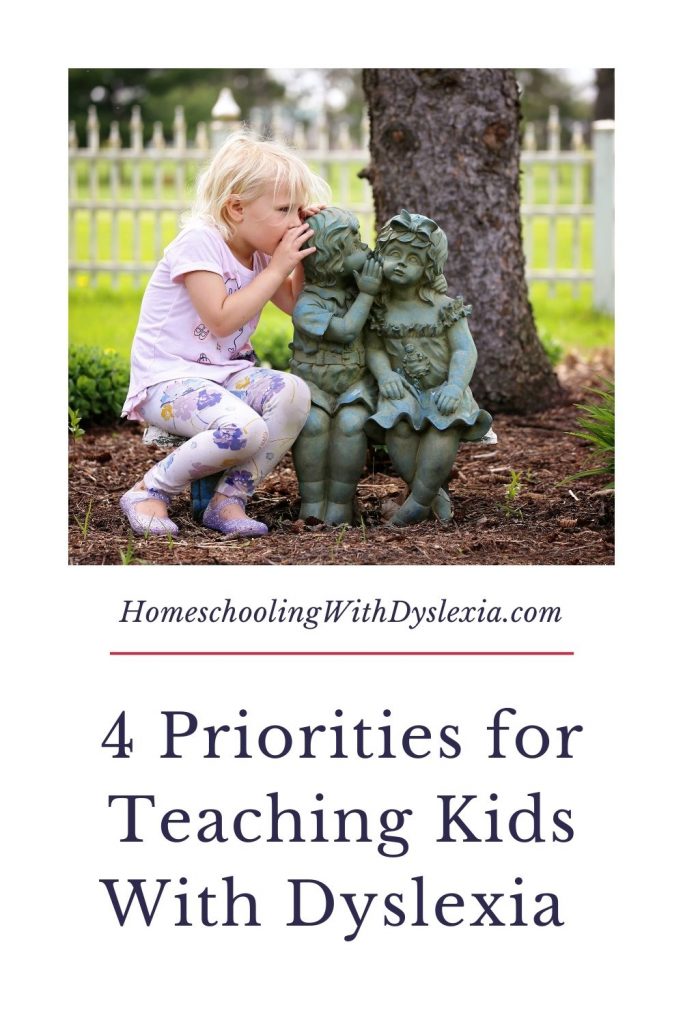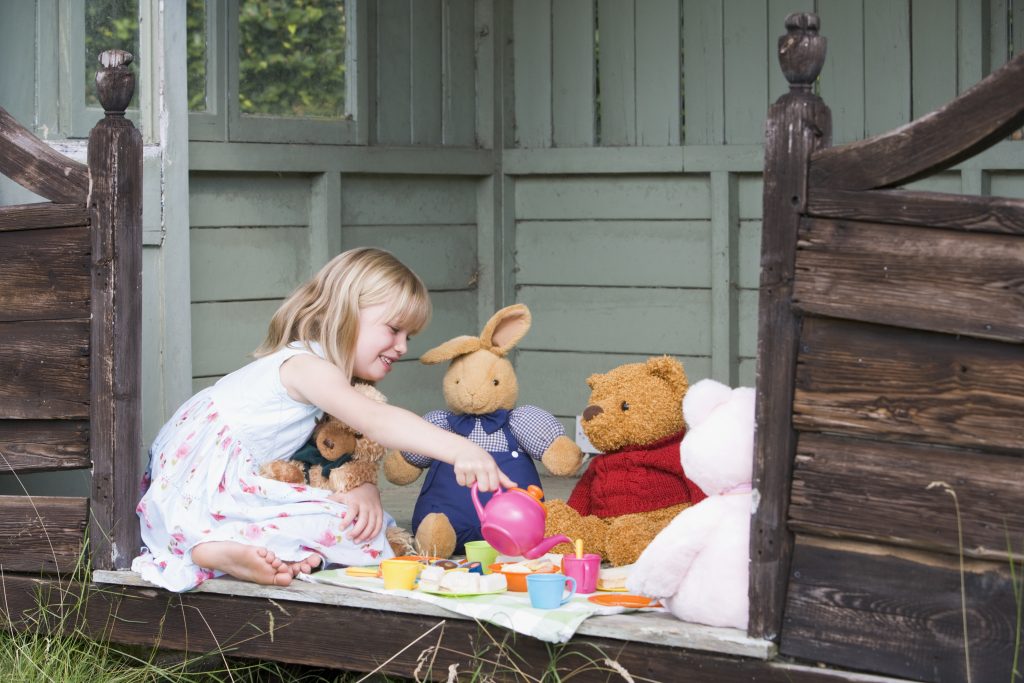As parents (or teachers) of kids who are bright but struggle we are always on the lookout for the best methods for teaching our kids with dyslexia. Here are the 4 top priorities for me as I homeschool my kids with dyslexia every day.

I get emails every week asking me to check out a program or book series that offers help with teaching kids with dyslexia. There are a lot of well-meaning people and helpful programs and games out there.
However, in my experience there are a handful of practices that parents and teachers can commit to that will provide the biggest return in the long run. Then, if you want to add a tutor, a therapy, colored overlays, or supplements, go for it! But be sure to be doing these 4 things as you homeschool your differently wired kiddos.
Teaching Kids With Dyslexia
The most helpful things you can do to provide the best education for your kids who learn differently because of dyslexia, dysgraphia, dyscalculia, or ADHD are the following:
Teach reading with the Orton-Gillingham approach.
Orton-Gillingham (OG) is an approach to teaching reading that has consistently been shown in research to have excellent results in kids with dyslexia. The approach works well with all kids whether they have dyslexia or not because its systematic, explicit, sequential, and multi-sensory methods are super effective for any learner of any age. Fortunately, there is no need to reinvent the wheel as there are a handful of excellent OG reading programs designed for use at home.
Learn more about the Orton-Gillingham approach here.
My comparison of the top 4 Orton-Gillingham reading programs.
“Dyslexia is a specific learning
International Dyslexia Associatondisabilitydifference (edited by me!) that is neurobiological in origin. It is characterized by difficulties with accurate and/or fluent word recognition and by poor spelling and decoding abilities. These difficulties typically result from a deficit in the phonological component of language that is often unexpected in relation to other cognitive abilities and the provision of effective classroom instruction. Secondary consequences may include problems in reading comprehension and reduced reading experience that can impede the growth of vocabulary and background knowledge.”
Understand both the strengths and the weaknesses of dyslexia.
When our oldest was diagnosed with dyslexia, I honestly had no idea that there were intelligent people who struggled to learn. I judged my own bright but struggling son by the only standard I knew – how I learned.
I had a few vague notions of what dyslexia was, mostly myths like letter and number reversals and blaming parents for not reading enough to their kids at home. I went through years of unnecessary guilt and shame because I just didn’t know the truth about what dyslexia actually was.
Now with 4 adult dyslexic kids, I can see proof of the many strengths of dyslexia. I no longer define dyslexia solely by its weaknesses. I identify dyslexia as a learning difference whose weaknesses also result in some pretty impressive strengths.
Read more about dyslexic strengths here.
Take the fast track to understanding dyslexia by
taking one of my parent dyslexia courses.

Give your kids time.
Time to play, time to think, and time to learn at their own pace. I think this topic needs its own post, but I will try to sum up the importance of giving your kids time.
Time to play: research has shown the importance of children and play. Children need plenty of time to create, time to imagine, and time to interact with others without an agenda. It is NOT wasted time. Anytime a child can use their imagination and critical thinking to create and explore is ALL good.
Time to think: this aspect is twofold. Most kids with dyslexia will have some sort of processing lag, whether visual or auditory. Our kids need more time to process information. Have you ever asked your child to do something and their initial reaction is as if they didn’t even hear you? Give them time to process. Slow down and let give them the time to process their thoughts.
Lastly, give your kids time to learn at their own pace. Kids with dyslexia don’t learn at the same pace as their peers especially in the elementary years. Trying to force them to will often result in major stress for both teacher and child. Homeschooling is ideal for providing this kind of time.
Be consistent.
This seems simple, but it isn’t always easy. Prioritize numbers 1-3 and your child will enjoy an organic learning experience that includes both early intervention and plenty of free time to cultivate their interests and grow their critical thinking.
For more tips for teaching kids with dyslexia, download my free guide: 50 Tips for Teaching Kids With Dyslexia
After homeschooling my 7 kids with dyslexia over the past 25 years, I can honestly say that these things were the most important in my adult kids’ success. We can get so caught up in ‘keeping up’ that we can lose sight of the fact that our kids are smart and gifted with unique strengths. Taking a step back to look at the bog picture can help us and our kids to enjoy the learning process.
To learn about other attributes of dyslexia success, read this post: 6 Attributes of Dyslexia Success and how to teach them to your kids HERE
What things do you prioritize as you teach your dyslexic kids?





Hello! How do we implement an orton gillingham program and still allow the kid time to play and think? The program I looked at (Logic of English) takes 30-40 min daily. She’s seven we have been doing phonics several years so she’s getting burned out. I dont want to leave out Science and History because she enjoys those but if I’m not careful our school day will become too long and we’ll both dread it every day.
At the same time, she’s starting to read so I dont want to pull back too much and lose momentum. It’s such a careful balance to feel like I’m doing enough and not doing too much.
It is a careful balance and homeschooling always will be! Something that helped me with this balancing act has been letting go of the idea that my child needs to catch up. Some kids progress slowly and others not so slowly. Take time most days to work on reading without the stress of feeling behind. She may not learn to read fluently until she is 10 or older! Enjoy your days and don’t worry. She will learn to read. PS. A lot of learning happens through a child pursuing their interests. Taking time for the ‘fun stuff’ is important learning too!
Do you have a dyslexia tutor training program you’d recommend? Is a certification necessary? or what’s the best way to get trained?